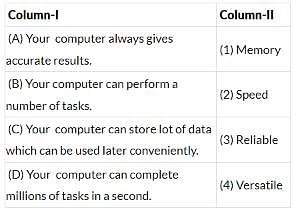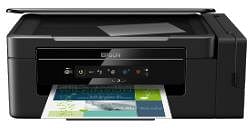Olympiad Test Level 2: Fundamentals of Computer - 1 - Class 3 MCQ
10 Questions MCQ Test Cyber Olympiad for Class 3 - Olympiad Test Level 2: Fundamentals of Computer - 1
Which of the following is the image of Abacus?
The working of Central Processing Unit (CPU) is compared with which of the following organs of human body?
| 1 Crore+ students have signed up on EduRev. Have you? Download the App |
The word Abacus is derived from Abax, a word from
The processing speed of first generation computers was
Which was the computer conceived by Babbage?
Aakash is applying in a school for admission in class 4. He has hard copy of his class 3 marksheet. He has to e-mail his class 3 marksheet to the school. Which of the following components he may need?
When we say the monitor is 1920 × 1084 pixels, 1920 × 1084 is the ________.
Which of the following statements is INCORRECT?
___________ is a name for the computer.
___________ is known as the Brain of the computer.
___________ stores information temporarily or permanently as per our need.
___________ is used for logical and mathematical operations.
|
20 videos|42 docs|71 tests
|
|
20 videos|42 docs|71 tests
|























